#contrology
Explore tagged Tumblr posts
Text
Το Pilates δεν έχει εποχή
Ή αλλιώς
Το καλοκαίρι δεν είναι «διάλειμμα από το σώμα σου».
– Γιατί η Συνέπεια Κερδίζει!
Καλωσορίζουμε τον Ιούνιο και μαζί του ξεκινάει επίσημα το ελληνικό καλοκαίρι. Ζεστά απογεύματα, αποδράσεις στη θάλασσα, πιο χαλαροί ρυθμοί.
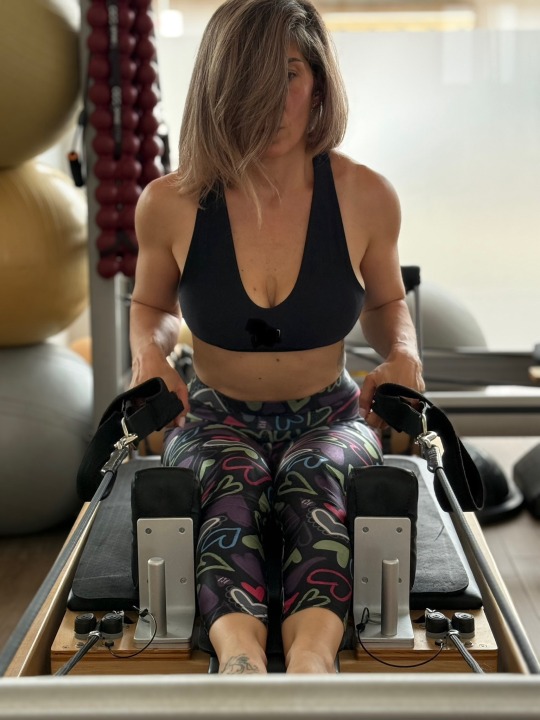
Πολύ συχνά, αυτή την εποχή βλέπουμε πολλούς να «παγώνουν» τις συνήθειές τους στη γυμναστική, λες και το σώμα τους κάνει κι αυτό… διακοπές.
Όμως, η συνέπεια είναι αυτή που κάνει τη διαφορά.
Η άσκηση —και ειδικά το Pilates— δεν είναι εποχιακή υπόθεση. Δεν την κάνουμε μόνο για να προλάβουμε την παραλία, τη χρειαζόμαστε για να νιώθουμε καλά, να στεκόμαστε όρθιοι με ενέργεια και αυτοπεποίθηση, χειμώνα-καλοκαίρι.
Γιατί να συνεχίσεις Pilates και το καλοκαίρι;
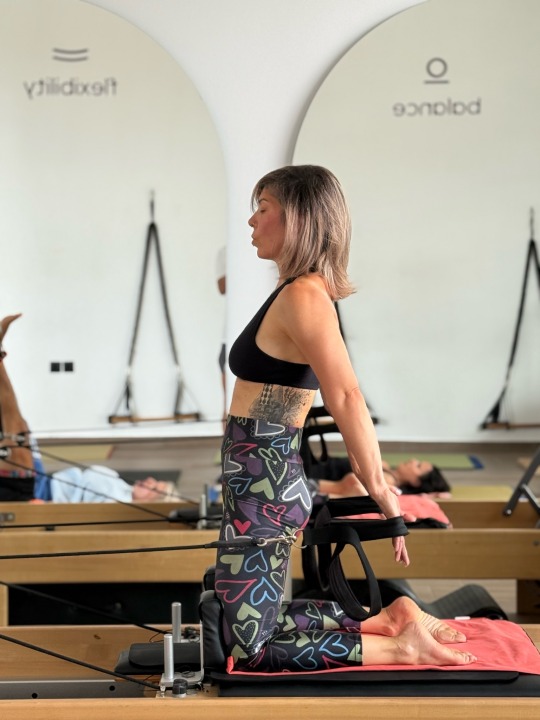
🔸 Διατήρηση αποτελεσμάτων – Ό,τι έχτισες τον χειμώνα δεν χρειάζεται να χαθεί. Ακόμα και 1 φορά την εβδομάδα αρκεί για να κρατήσεις τη δύναμη και την ευλυγισία σου.
🔸 Ενέργεια & διάθεση – Η άσκηση ανεβάζει τη διάθεση, ειδικά όταν συνδυάζεται με καλοκαιρινό ήλιο.
🔸 Ομαλή επιστροφή το φθινόπωρο – Όσοι δεν σταματούν εντελώς την άσκηση, επιστρέφουν πολύ πιο εύκολα το Σεπ��έμβρη, χωρίς «restart».
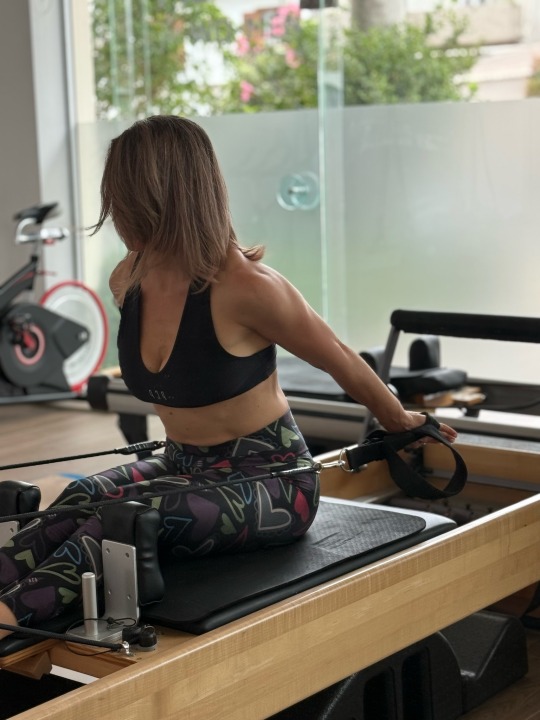
Το καλοκαίρι δεν είναι «διάλειμμα από το σώμα σου».
Είναι ευκαιρία να του δώσεις αυτό που του αξίζει, σε μια πιο ήρεμη και φωτεινή εκδοχή.
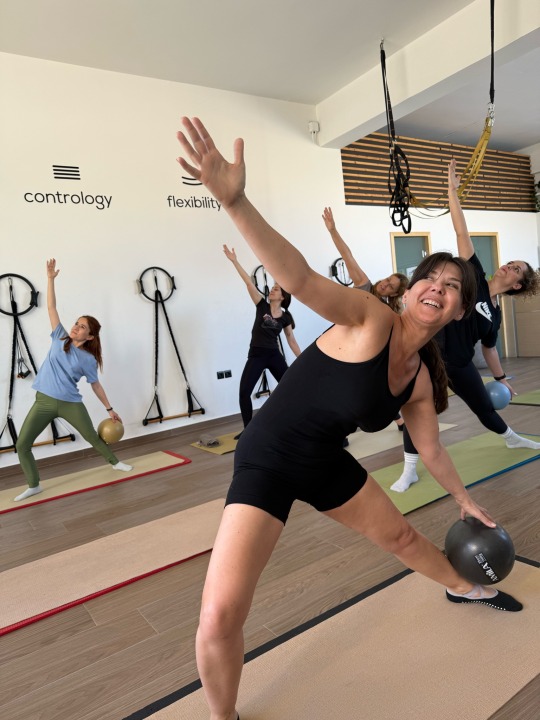
Κλείσε τη θέση σου για τα καλοκαιρινά sessions και συνέχισε να φροντίζεις το σώμα σου — γιατί το καλοκαίρι δεν χρειάζεται μόνο αντηλιακό, αλλά και… Pilates!
2 notes
·
View notes
Text

Pilates is the combining of mankind’s vast knowledge on health that span thousands of years, and cats, to develop the ultimate fitness exercise!
🧘🏻♀️🐈
#history#pilates#joseph hubertus pilates#physical health#contrology#health history#fitness#historical figures#soft girl#pink pilates aesthetic#excercise#just girly things#american history#1920s#workout#isle of man#dance#cheer#ballet#pilates princess#mental health#cats#german history#gymnastics#nickys facts
6 notes
·
View notes
Text
What do you know about Pilates?
Did you know that a German invented it?
mod
Inventor of the Pilates method (1883-1967)
Denise Steger (Linz am Rhein)

In 1929, Pilates opened his body training studio (Universal Gym) at 939 8th Ave, The Van Dyck Building. On his business cards, he gave his date of birth as 1880. It is not known why he made himself three years older, presumably to promote how fit you can be even at almost 50 years of age. The text on the cards read: ‘A MAN IS AS OLD AS HIS SPINE IS FLEXIBLE – A WOMAN AS OLD AS SHE LOOKS IN THE MORNING’.

The ‘Universal Gym’ in New York, run by Pilates.
Despite the world economic crisis, Pilates was able to make a great success of the studio, with athletes, business people and actors, including Catherine Hepburn (1929-1993) and Sir Lawrence Olivier (1907-1989), but it was mainly dancers who were enthusiastic about his training method. Among them were the pioneer of modern dance, Martha Graham (1894-1991), who founded the Martha Graham School of Dancing in Manhattan in 1926, and many stars of the New York City Ballet. During his 38-year career as studio manager, his client list included over 2,000 students. In the 1940s, a Canadian magazine classified the Pilates studio as ‘a high-class exercise salon’ due to the high fee of $10 per session. In addition to Clara, his niece Mary Pilates and Clara's niece Irene Zeuner-Zelonka assisted him.
In 1934, Pilates published his writing ‘Your Health’ and in 1945 ‘Return to life through Contrology’ (Return to life through ‘Contrology’), which describes the philosophy and principles of his method. They are based on the pursuit of whole-body health, in which body, mind and soul are in balance, which can be achieved through physical exercise, proper nutrition, hygiene, balanced sleep, plenty of outdoor exercise and a balance of work, leisure and relaxation. Through the exercises he developed, ‘Contrology’, mental strength and mental well-being are also developed. The special form of Pilates breathing, consciously performed during the exercises, allows the body to function optimally. As an ‘inner shower’, it is said to cleanse the body and ultimately lead to the rejuvenation and strengthening of the entire person.
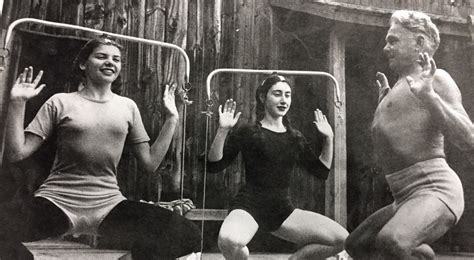
A Pilates class at Jacob's Pillow University of the Dance, where Joseph Pilates taught between 1941 and 1951.
The equipment developed and patented by Pilates himself – there were over 20 of them – not only added an additional dimension of body strengthening and correction of posture to the so-called ‘mat training’, which consists of a series of 34 floor exercises, but was also used in rehabilitation. Pilates created a special exercise programme for injured people, such as dancers, and worked with these clients in a separate room. The success must have been considerable, because the orthopaedic surgeon Dr Henry Jordan adopted the Pilates training concept in his therapy, as did Dr James Garrick, founder of the first clinic for dance medicine.
Pilates held numerous lectures and courses for both doctors and students at the Chiropractic Academy, taught on US military bases and founded the health group called ‘Return to Life’. He documented his work extensively with photographs and film. 1939-1951, Pilates regularly taught at the summer camp for dancers ‘Jacob's Pillow’, Berkshire Mountains, where the pioneers of contemporary dance, such as Ted Shawn, and many students met. Joe and Clara owned a house there.
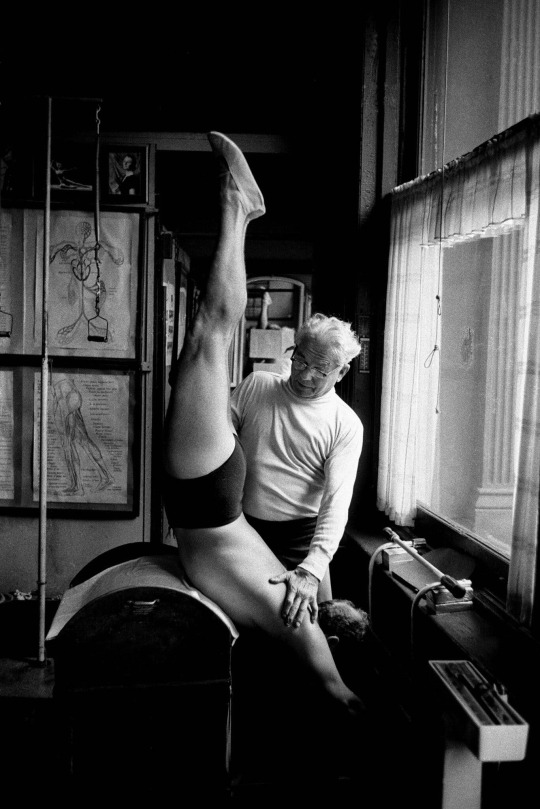
Joseph Hubertus Pilates treating a customer.
Pilates died of emphysema, which had apparently been bothering him for some time, at the Lenox Hill Hospital in New York on 9 October 1967, shortly before his 84th birthday. His urn and, later, Clara Zeuner's urn were buried in the Ferncliff Mausoleum in Hartsdale, New York.
Clara Zeuner continued to run the studio until 1972. After her death in 1976, it was taken over by the classical dancer and Pilates student Romana Kryzanowska (1923-2013) in 1977.
In the meantime, his students had spread the Pilates method worldwide, which in its further development split into different styles. Even today, many stars who are looking for fitness and figure-improving methods see Pilates as the ideal training and contribute to the popularity of his method. But the Pilates method has also been incorporated into modern sports science, physiotherapy and rehabilitation, where it has been supplemented and refined according to the latest findings.
Publications
Your Health; a corrective system of exercises that revolutionizes the entire field of physical education, New York 1934. New edition: Presentation Dynamics, Incline, NV 1998.
Return to Life Through Contrology, edited by Joseph H. Pilates and William John Miller, New York 1945, new edition: Presentation Dynamics, Incline, NV.
New edition of both works: A Pilates' Primer: The Millennium Edition, Presentation Dynamics, Incline, NV 2000-2005.
Literature
Geweniger, Verena/Bohlander, Alexander, Das Pilates-Lehrbuch, Berlin/Heidelberg 2012.
Kryzanowksa, Romana/Gallagher, Sean P. (ed.), Joseph H. Pilates Archive Collection, The Photographs, Writings and Designs, 2000.
Online
Aparicio, Esperanza and Javier Pérez Pont, Hubertus Joseph Pilates, The Biography. HakaBooks.com e-ditions 2013. [online]
Geweniger, Verena/Bohlander, Alexander, Das Pilates-Lehrbuch, Berlin und Heidelberg 2013. [online]
Thomson, Bruce, Joseph Pilates life & biography. [online]
Wiggin, Mej, Joseph H. Pilates: The History. [online]
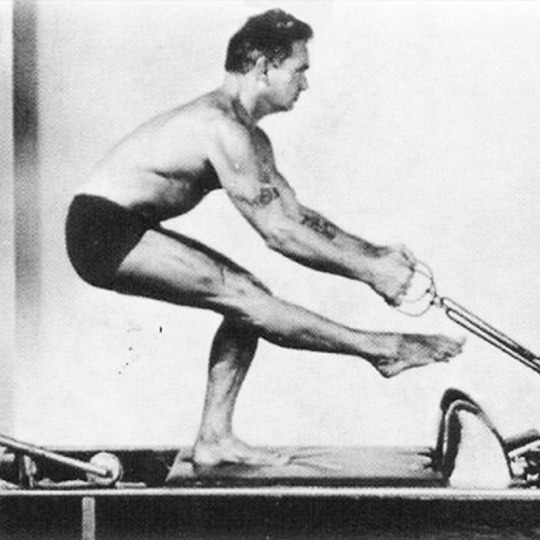


Check out....
12 notes
·
View notes
Note
https://www.tumblr.com/amoreuxi/787009299998261248/every-time-i-remember-that-pilates-is-actually
I looked it up and the meaning is kinda cool but out of all words.. 😭
isn't it weird how we literally just... ignored the creator of the method completely and just called it by his name forever? I think I would hate that so much
but if you think about it, a lot of people would benefit if it was called "contrology" because way too many people practice pilates as an impact exercise when it is closer to something like tai chi. slow and steady and all
but "pink contrology princess" just doesn't have the same ring to it (。ノω\。)
2 notes
·
View notes
Note
can you tell me about the history of pilates now. im curious
Basically it was invented by this guy joseph pilates who, after being in the circus, was put in a british internment camp during world war 1 and invented a bunch of weirdo machines for exercise and muscle health and basically started whats now known as pilates (at the time he called it contrology.) after fleeing to the usa after the war he opened the first real gym which was right next to his wife's(who was a ballet instructor) ballet studio, which caused pilates to become popular among dancers 👍 theres more and that might not be fully accurate but its kinda neat
13 notes
·
View notes
Text
The 6 Principles of Pilates: Understanding the Foundation of Your Practice
Pilates is more than just a series of exercises; it's a holistic movement system designed to unify mind, body, and spirit. At the heart of this practice lie six fundamental principles, laid down by its founder, Joseph Pilates. Understanding and embodying these principles is key to unlocking the full transformative power of your Pilates practice.
Whether you're a seasoned practitioner or stepping onto the mat for the very first time, revisiting these core tenets will deepen your connection to the work and elevate your results. Let's dive in!
1. Concentration: The Mind-Body Connection
In our fast-paced world, it's easy for our minds to wander during exercise. But in Pilates, concentration is paramount. Every movement, no matter how small, requires your full mental engagement.
Joseph Pilates believed that "It is the mind itself which builds the body." By consciously focusing on each muscle engagement, the alignment of your spine, and the path of your limbs, you create a powerful mind-body connection. This isn't just about performing an exercise; it's about understanding why and how you're doing it, leading to more effective and safer movements. Distractions are left at the studio door, allowing you to be fully present in your body.
2. Control: Mastering Your Movements
Pilates is often described as "Contrology," the original name Joseph Pilates gave his method. This principle emphasizes control over momentum and gravity. Instead of rushing through movements or relying on brute force, every action is executed with deliberate precision and conscious engagement.
Think of it as moving with intention. You're not just lifting your leg; you're controlling the ascent, the stability of your core, and the controlled descent. This meticulous approach strengthens not just the primary movers but also the smaller, stabilizing muscles, leading to greater body awareness and preventing injuries.
3. Centering: Powerhouse Activation
At the core of Pilates lies the concept of centering, often referred to as the "Powerhouse." This encompasses your deep abdominal muscles, pelvic floor, glutes, and the muscles around your lower back. It's the stable foundation from which all movement originates and returns.
By engaging your Powerhouse, you create a strong, stable core that supports your spine, protects your organs, and allows for efficient and powerful movement in your limbs. Before initiating any exercise, you'll be guided to "find your center" – drawing your navel towards your spine and feeling that deep internal support. This isn't about sucking in your stomach; it's about activating those deep stabilizing muscles.
4. Precision: Quality Over Quantity
Joseph Pilates firmly believed in precision – the exactness of each movement. This means paying close attention to the details of alignment, the angle of your limbs, and the coordination of your body.
It's not about how many repetitions you can do, but how perfectly you can execute each one. A single, precisely performed repetition is far more beneficial than ten sloppy ones. Precision ensures that you're working the correct muscles, avoiding strain on others, and maximizing the benefits of every exercise. Your instructor will provide cues to help you refine these subtle, yet powerful, details.
5. Breath: The Life Force of Pilates
Breath is often the most overlooked yet vital principle in any exercise regimen, and in Pilates, it's a cornerstone. Pilates emphasizes full, deep, and coordinated breathing – typically lateral or posterior breathing, where you expand your rib cage out to the sides and back, rather than just lifting your chest.
Your breath is not just about oxygen; it's intricately linked to core engagement, movement initiation, and relaxation. Inhales often prepare you for a movement, while exhales facilitate core engagement and help you deepen into an exercise. Proper breathing helps to cleanse the body, oxygenate the blood, and release tension, enhancing both the physical and mental benefits of your practice.
6. Flow: Graceful Movement
Once concentration, control, centering, precision, and breath are established, the principle of flow emerges. Pilates exercises are designed to transition smoothly and gracefully from one to the next, creating a continuous, fluid sequence of movement.
This isn't about rushing; it's about seamless transitions, where the end of one movement becomes the beginning of the next. Flow adds an element of grace and rhythm to your practice, challenging your stamina, coordination, and mental focus. It transforms a series of individual exercises into a unified, moving meditation.
Embracing the Principles in Your Practice
As you step onto the mat or reformer, remember that these six principles are not separate entities but interwoven threads that create the rich tapestry of Pilates. By consciously integrating concentration, control, centering, precision, breath, and flow into every session, you will not only build a stronger, more flexible body but also cultivate a deeper connection to yourself.
Are you ready to experience the transformative power of mindful movement? Join us and discover the foundation of a healthier, more balanced you.
0 notes
Text
Doing Pilates exercises for hip toning is a simple and effective approach to get back in shape. Check out the best exercises and how to do them.Fat storage in the hips can be caused by a variety of causes, including a poor diet, sedentary lifestyle, genetics, or even hormone imbalance. However, using Pilates exercises for hip toning might be a simple and efficient strategy to lose excess weight. Unlike high-impact workouts, Pilates emphasises on accuracy, focussing on the deeper muscles that contribute to a contoured and strong hip area. This technique not only improves appearance, but it also improves hip stability, flexibility, and functional fitness. Check out some of the best Pilates exercises for hip toning and achieving a perfect structure.What are Pilates exercises?Pilates is a low-impact workout invented in the early twentieth century by German inventor Joseph Pilates, who initially known as Contrology. Joseph Pilates thought that mental and physical health were connected. His techniques were intended to strengthen the core muscles while also increasing flexibility, balance, and general body awareness. A Research Gate study claims that Pilates exercises place a strong focus on breathing techniques, deliberate synchronisation, controlled movements, and exact alignment. It can be done on a mat or with specific equipment such as the Reformer, Cadillac, or Wunda Chair.If you want to try Pilates exercises for hip toning, start with these easy and effective workouts. Image courtesy: Adobe StockPilates exercises for hip toning: How does it help?Pilates exercises efficiently tone hips by emphasising precise, controlled motions that promote deep core and hip muscles. It strengthens the glutes, abductors, and adductors, giving the body a sculpted appearance. The approach increases hip stability and flexibility, hence increasing functional fitness, as found in a study published in the Journal of Clinical Orthopaedic and Related Research. Pilates’ emphasis on core involvement provides appropriate muscle activation and maximum toning results. It reduces injury risk by utilising low-impact, regulated workouts. Regular practice improves posture and alignment, which contributes to better hip definition.Pilates exercises for hip toning: 15 exercises to tryIf you want to try Pilates exercises for hip toning, start with these easy and effective workouts, as suggested by Pilates expert Dr Vajjala Shravani.1. Pelvic curl Lie on your back with knees bent and feet flat on the floor. Engage your core and tilt your pelvis back, flattening your lower back against the floor. Continue lifting your hips off the floor, vertebra by vertebra, until your body forms a straight line from shoulders to knees. Slowly lower back down, vertebra by vertebra, returning to the starting position. Repeat 10-12 times.2. Side-lying leg lifts Lie on your side with legs extended and aligned with your spine. Engage your core and lift your top leg straight up, keeping it in line with your hip. Lower the leg slowly, maintaining control. Repeat 12-15 times on each side.This is one of the best Pilates for reducing hip fat. Image courtesy: Adobe Stock3. Side-lying leg circles Lie on your side as in the previous exercise. Lift your top leg and make small, controlled circles in one direction. Reverse the direction of the circles. Perform 10 circles in each direction on each side.4. Clamshell Lie on your side with knees bent and stacked, feet aligned with your spine. Engage your core and keep your feet together while lifting your top knee, opening your hips like a clamshell. Lower the knee slowly and with control. Repeat 15-20 times on each side.5. Leg pull front Start in a plank position. Lift one leg straight up behind you, keeping your core engaged and hips level. Lower the leg with control. Repeat 10-12 times per leg.6. Leg pull back Sit with legs extended, hands behind you, fingers pointing away. Lift your hips, creating a reverse plank. Lift one leg, keeping your hips level.
Lower the leg. Repeat 10-12 times per leg.7. Single leg stretch Lie on your back, knees bent, feet flat. Bring one knee to your chest, holding it with your hands. Extend the other leg straight out, keeping it slightly off the floor. Switch legs, pulling the opposite knee to your chest. Repeat 15-20 times per leg.8. Double leg stretch Lie on your back, knees bent, feet flat. Bring both knees to your chest, holding them with your hands. Extend both arms and legs out at a 45-degree angle. Circle your arms around to hug your knees back to your chest. Repeat 10-12 times.9. Swimming Lie face down, arms and legs extended. Engage your core and lift your arms and legs slightly off the floor. Alternate lifting your right arm and left leg, then your left arm and right leg, as if swimming. Repeat for 30-60 seconds.Single leg stretch exercise you must try for toning your hips. Image courtesy: Adobe Stock10. Kneeling side kicks Kneel on all fours. Extend one leg straight out to the side. Lift and lower the leg, keeping it in line with your hip. Repeat 12-15 times on each side.11. Donkey kicks Start on all fours. Lift one leg, bending the knee at a 90-degree angle, and kick your foot towards the ceiling. Lower the leg with control. Repeat 12-15 times on each side.12. Bridge with leg extension Begin in a bridge position. Extend one leg straight out, keeping your hips lifted. Lower and lift the extended leg slightly. Return the foot to the floor and lower your hips. Repeat 10-12 times per leg.13. Spine twist Sit with legs extended or crossed. Extend your arms out to the sides. Twist your torso to one side, keeping your hips stable. Return to center and twist to the other side. Repeat 10-12 times per side.14. Hundred Lie on your back, knees bent, feet flat. Lift your legs to a tabletop position, or extend them straight up. Lift your head and shoulders off the floor, reaching your arms forward. Pump your arms up and down, inhaling for five counts and exhaling for five counts. Repeat for 100 pumps (10 sets of 10).15. Rolling like a ball Sit with knees bent, feet lifted. Hold your ankles. Roll backwards onto your shoulders. Roll forward back to the starting position. Repeat 8-10 times.Side effects of doing Pilates exercises for hip toningHere are some of the potential side effects of doing Pilates exercises for hip toning: Especially for beginners, experiencing muscle soreness after a Pilates session is common. This is a normal response to working muscles that may not be used to the exercises. Pushing too hard, too fast can lead to overexertion and injury. It’s crucial to listen to your body and progress gradually.If you experience any of these side effects, it is important to stop the exercise and consult with a healthcare professional.You may also likeRelated FAQsDo I need any special equipment for Pilates hip toning exercises?Most pilates exercises can be done with just a mat. Some people choose to use resistance bands to increase the intensity of some exercises.Can Pilates help with hip pain?Yes, Pilates can help improve hip stability and flexibility, which can alleviate some types of hip pain. However, it's essential to work with a qualified instructor and consult with a healthcare professional if you have chronic hip pain.Disclaimer: At Health Shots, we are committed to providing accurate, reliable, and authentic information to support your health and well-being. However, the content on this website is intended solely for informational purposes and should not be considered a substitute for professional medical advice, diagnosis, or treatment. Always consult a qualified healthcare provider for personalised advice regarding your specific medical condition or concerns. Read More Read More
0 notes
Text
Pilates & Weight Training

In Pilates’ authentic work contrology, he devised workouts. As they have proved so effective, they nonetheless to this day stay largely unchanged. While every of the exercises has an extensive range of advantages, they're significantly helpful for enhancing stability and suppleness. The exercises in this collection of movies are suitable for most people in good well being with an inexpensive level of health. Finding time to train could be a problem in our trendy everyday lives - Pilates Doncaster East.
This is an excellent exercise for activating and 'waking up' the core as you employ the abdominals to pull your leg up. But it additionally works effectively to strengthen the decrease abdominals, which aren't as simply focused in traditional workouts like crunches, and the hip flexors. Pushing down together with your heels, raise your hips till you have a straight line out of your knees to shoulders. Planks, glute bridges, single-leg isolation exercises, crunches and table-top actions have been huge hits in a lot of the sessions, whether the exercise tackled full physique or focused on a specific muscle group. This train is good for challenging lumbar stabilisation, as nicely as for strengthening the glutes. Maintaining the peak and stability of the pelvis as one leg lifts may be difficult - doncaster east pilates.
We offer a wide variety of Pilates lessons every week suited to different levels of fitness and advancement. We also offer online pilates lessons for those of you who choose to train at residence. The pelvic curl is normally one of many first exercises taught to patients. It’s relatively simple but in addition, exhibits tips on how to use the belly muscle tissue in a way that supports and lengthens the again. This exercise particularly makes use of the abdominals, hamstrings, and gluteus maximus.
These Pilates workouts for decrease again pain have been taken from Pilates for Rehabilitation. You can study more about the advantages of weight training here. Personally, Pilates has turn out to be invaluable to me as a Health and Fitness Editor and fitness trainer trying to recoup after an injury. As somebody who does a decent amount of exercise - it's principally my job to exercise my body can usually get tired and tight, with small imbalances and weaknesses increase over time. For more information, please visit our site https://pilatespower.com.au/
0 notes
Text
How Pilates Can Transform Your Body and Mind

Pilates is more than just an exercise routine; it is a comprehensive approach to physical and mental well-being. Developed in the early 20th century by Joseph Pilates, this method emphasizes the balanced development of the body through core strength, flexibility, and awareness. In today's fast-paced world, the importance of a strong mind-body connection cannot be overstated. This blog explores how Pilates can transform both your body and mind, enhancing your overall quality of life.
Key Takeaways
Pilates offers a holistic approach to fitness, focusing on both physical and mental health.
Key benefits include improved core strength, flexibility, muscle tone, stress reduction, and enhanced mindfulness.
Pilates is suitable for all fitness levels and can be easily incorporated into your daily routine.
The Origins of Pilates
History and Development of Pilates
Joseph Pilates developed Pilates during the early 20th century as a method to improve physical health and rehabilitation. His system, originally called "Contrology," focused on controlled movements, mental focus, and breathing techniques. Pilates believed that physical and mental health were closely interconnected, a principle that remains central to the practice today.
Key Figures in Pilates History
Joseph Pilates is, of course, the most significant figure in the history of Pilates. His methods were further refined and popularized by his students, such as Romana Kryzanowska, who continued to teach and evolve Pilates long after his death. These pioneers ensured that Pilates became a globally recognized fitness regime.
Understanding the Principles of Pilates
The Core Principles of Pilates
Pilates is built on several core principles that guide every movement and exercise. These principles ensure that the practice is effective and safe, providing maximum benefits for both body and mind.
Concentration
Focus is crucial in Pilates. Concentrating on each movement helps to ensure proper form and maximizes the effectiveness of each exercise.
Control
Pilates is about controlled movements. This control helps to prevent injuries and ensures that muscles are being worked efficiently.
Centering
The core, or "powerhouse," is the center of Pilates practice. Strengthening the core supports the entire body, improving posture and balance.
Flow
Movements in Pilates should be fluid and graceful. This flow helps to create a balanced and harmonious workout.
Precision
Precision ensures that each movement is performed correctly, enhancing the effectiveness of the exercise and preventing strain or injury.
Breathing
Proper breathing is essential in Pilates. Deep, controlled breaths help to oxygenate the muscles and improve focus and relaxation.
Physical Benefits of Pilates
Enhancing Core Strength
One of the primary benefits of Pilates is its ability to enhance core strength. A strong core supports the spine, improves posture, and reduces the risk of back pain and injuries.
Improving Flexibility
Pilates exercises involve a lot of stretching and lengthening of the muscles, which helps to improve flexibility. Increased flexibility can reduce muscle stiffness and improve overall mobility.
Increasing Muscle Tone
Pilates helps to tone and sculpt muscles, creating a lean and defined physique. Unlike other workouts that bulk up muscles, Pilates focuses on lengthening and strengthening them.
Boosting Overall Physical Fitness
Pilates offers a full-body workout that improves overall fitness. It enhances endurance, balance, and coordination, making it an excellent complement to other forms of exercise.
Mental Benefits of Pilates
Reducing Stress and Anxiety
The focus on controlled breathing and mindful movements in Pilates helps to reduce stress and anxiety. This mindful practice allows you to disconnect from daily stressors and focus on the present moment.
Enhancing Mindfulness
Pilates encourages mindfulness by requiring you to focus on your body's movements and alignment. This heightened awareness can improve mental clarity and emotional well-being.
Improving Focus and Concentration
The concentration required in Pilates can enhance your focus and concentration in other areas of your life. This mental discipline can lead to improved productivity and better decision-making.
Promoting Emotional Well-being
Regular Pilates practice can lead to a more positive outlook and better emotional health. The combination of physical activity and mindful practice helps to release endorphins, the body's natural mood lifters.
How to Get Started with Pilates
Finding the Right Class or Instructor
To get the most out of Pilates, it's essential to find a qualified instructor or class. Look for certified instructors who have a deep understanding of the Pilates principles and can provide personalized guidance.
Basic Pilates Equipment
While many Pilates exercises can be done with just a mat, other equipment such as resistance bands, Pilates rings, and reformers can enhance your practice. These tools help to add variety and intensity to your workouts.
Common Beginner Exercises
For beginners, it's important to start with basic exercises that build a strong foundation. Some common beginner exercises include the Hundred, Roll-Up, and Leg Circles. These exercises help to develop core strength and flexibility gradually.
Advanced Pilates Techniques
Progressing to Intermediate and Advanced Levels
As you become more comfortable with basic Pilates exercises, you can progress to intermediate and advanced levels. These levels introduce more challenging movements that further enhance strength, flexibility, and control.
Incorporating Pilates into Daily Routine
To reap the full benefits of Pilates, consistency is key. Incorporating Pilates into your daily routine can lead to significant improvements in your physical and mental health.
Combining Pilates with Other Workouts
Pilates can be combined with other forms of exercise, such as cardio and strength training, to create a well-rounded fitness routine. This combination can enhance overall fitness and prevent workout monotony.
Real-life Transformations: Success Stories
Personal Testimonials
Many individuals have experienced transformative benefits from Pilates. Personal testimonials highlight how Pilates has helped people to overcome physical limitations, improve mental health, and achieve their fitness goals.
Case Studies of Individuals
Case studies provide in-depth examples of how Pilates has positively impacted different people. These stories demonstrate the versatility and effectiveness of Pilates for various age groups and fitness levels.
Common Misconceptions About Pilates
Addressing Myths and Facts
There are several misconceptions about Pilates that can deter people from trying it. By addressing these myths and presenting the facts, more people can understand the true benefits of Pilates.
Differentiating Pilates from Other Workouts
Pilates is often confused with yoga or other fitness routines. Understanding the unique aspects of Pilates can help people to appreciate its distinct benefits and incorporate it into their fitness regimen.
Conclusion
Pilates offers a holistic approach to fitness that benefits both the body and mind. By focusing on core strength, flexibility, mindfulness, and controlled movements, Pilates can transform your overall well-being. Whether you are a beginner or an advanced practitioner, incorporating Pilates into your daily routine can lead to lasting positive changes.
FAQs
What is the Best Way to Start Pilates?
The best way to start Pilates is to find a certified instructor or join a reputable class. This ensures that you learn the correct techniques and get personalized guidance.
How Often Should I Practice Pilates for Best Results?
For optimal results, it's recommended to practice Pilates at least 2-3 times per week. Consistency is key to experiencing the full benefits.
Can Pilates Help with Specific Health Conditions?
Yes, Pilates can be beneficial for various health conditions, including back pain, arthritis, and post-rehabilitation. Always consult with a healthcare professional before starting any new exercise regimen.
What Should I Wear to a Pilates Class?
Wear comfortable, form-fitting clothing that allows for easy movement. Avoid loose clothing that can get in the way of exercises.
How is Pilates Different from Yoga?
While both Pilates and yoga focus on mind-body connection, Pilates emphasizes core strength, control, and precision. Yoga often includes more meditation and flexibility poses.
Are There Any Risks Associated with Pilates?
Pilates is generally safe for most people. However, it's important to practice under the guidance of a certified instructor to avoid injuries and ensure proper technique.
Pilates is more than just an exercise; it is a transformative practice that can improve both your physical and mental well-being. Start your Pilates journey today and experience the positive changes it can bring to your life.
0 notes
Text
💪 Γιατί να Προπονείσαι με Προπονητή και Όχι με YouTube ή ChatGPT
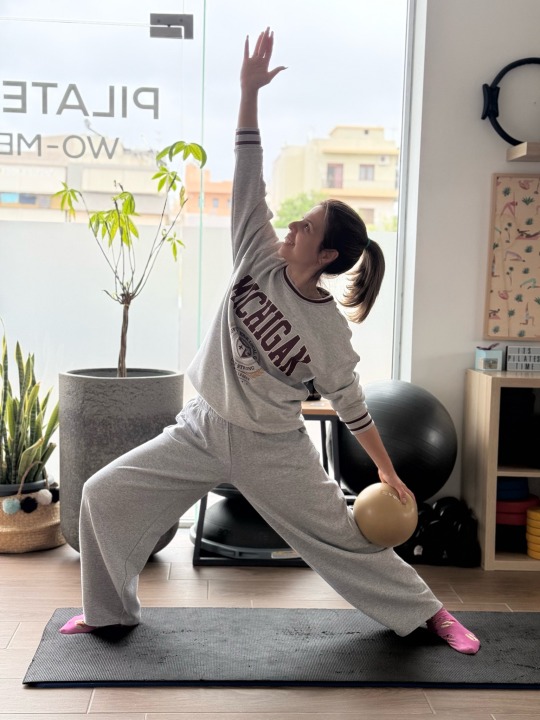
Στην εποχή που όλα είναι ένα κλικ μακριά – από ασκήσεις Pilates στο YouTube μέχρι εξατομικευμένα πλάνα από την τεχνητή νοημοσύνη – είναι εύκολο να σκεφτεί κανείς: “Γιατί να πληρώσω προπονητή; Τα βρίσκω όλα δωρεάν!”
Η απάντηση είναι απλή: γιατί η σωστή προπόνηση δεν είναι μόνο η πληροφορία, είναι η εφαρμογή της.
⸻
✅ 1. Η Σωστή Εκτέλεση Κάνει τη Διαφορά
Όταν προπονείσαι μόνος σου με video ή οδηγίες, κανείς δεν σε διορθώνει. Μπορεί να νομίζεις ότι κάνεις το τέλειο squat, αλλά στην πραγματικότητα να φορτώνεις τις αρθρώσεις σου λάθος ή να ενεργοποιείς εντελώς διαφορετικούς μύες από αυτούς που νομίζεις.
Ένας προπονητής είναι εκεί για να σε διορθώσει, να σε ευθυγραμμίσει και να σε καθοδηγήσει ώστε κάθε επανάληψη να μετράει, χωρίς να τραυματίζεις τις αρθρώσεις σου.
⸻
🔁 2. Η Συνέπεια Έρχεται με Υπευθυνότητα
Όταν έχεις ραντεβού με τον προπονητή σου, ξέρεις ότι κάποιος σε περιμένει. Ότι κάποιος παρακολουθεί την πρόοδό σου. Κι αυτό κάνει τεράστια διαφορά στη συνέπεια και τη δέσμευση. Γιατί το κλειδί για την επιτυχία είναι το να είσαι πιστός συνεπής και υπεύθυνος σε αυτό που κάνεις.
⸻
���� 3. Απόδοση +20% και Βελτίωση με Στρατηγική
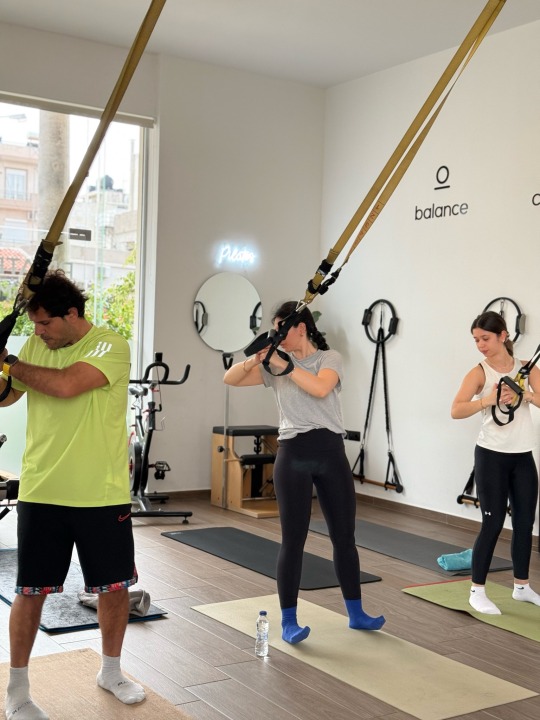
Μελέτες δείχνουν ότι άτομα που προπονούνται με καθοδήγηση αυξάνουν την απόδοσή τους έως και 20% περισσότερο, συγκριτικά με όσους ασκούνται μόνοι.
Ο λόγος; Ο προπονητής προσαρμόζει την ένταση, το επίπεδο και την πρόοδο ακριβώς στο σημείο που χρειάζεσαι – ούτε πολύ, ούτε λίγο. Έτσι προλαμβάνονται τραυματισμοί, υπάρχει κλιμάκωση και μαθαίνεις να δουλεύεις με το σώμα σου, όχι ενάντια σε αυτό.
⸻
🤖 Και το ChatGPT; Και το YouTube;
Ναι, είναι εργαλεία. Μπορείς να τα χρησιμοποιείς για πολλούς σκοπούς και να έχεις τα οφέλη που προσφέρουν.
Εργαλεία που όμως δεν μπορούν να σε δούν, να σε ακούσουν, να σε νιώσουν. Δεν μπορούν να καταλάβουν ότι σήμερα έχεις πιάσιμο, ή ότι κοιμήθηκες λίγο, ή ότι χρειάζεσαι πιο ήπια προσέγγιση. Ένας καλός προπονητής το καταλαβαίνει μέσα σε 2 λεπτά από τη στάση του σώματός σου και έτσι το μάθημα γίνεται εξατομικευμένο για τις ανάγκες του σώματος σου τη δεδομένη στιγμή.
⸻
🧠 Η Επένδυση στον Εαυτό σου Δεν Είναι Πολυτέλεια
Αν θέλεις πραγματικά να εξελιχθείς, να χτίσεις δυνατό, λειτουργικό σώμα και να απολαμβάνεις τη διαδικασία με ασφάλεια και σιγουριά, τότε ένας προπονητής είναι η καλύτερη σου επένδυση. Όχι γιατί δεν μπορείς μόνος, αλλά γιατί μαζί θα φτάσεις πιο γρήγορα, πιο σωστά και με λιγότερο κόπο.
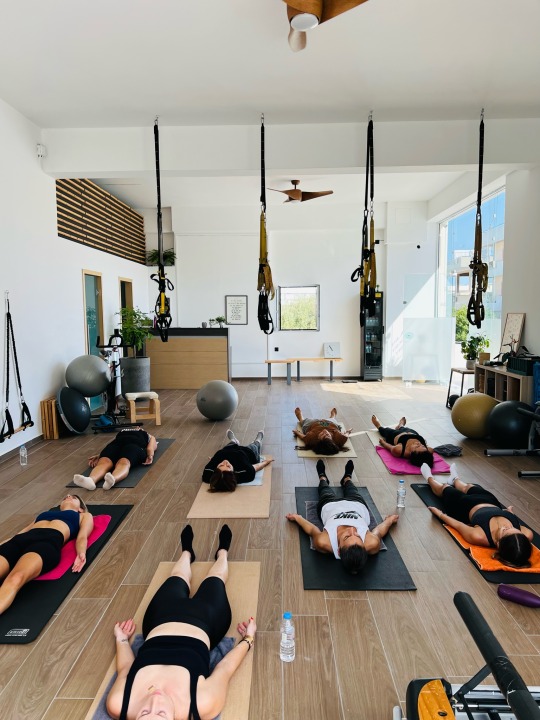
#pilatesforwo-men#pilates#contrology#loveyourbody#kiosterakis vasillis#pilatesforwo_men#tips#Ηράκλειο#Did Pilates Today ?#Αχεπανς 7 κηπούπολη#Αχεπανς 7#Ηράκλειο Κρήτης#pilatesforwo-men Studio#Κιοστεράκης Βασίλης
1 note
·
View note
Text
Devrais-je faire du Pilates?
Ne me demandez pas de parler contre le Pilates. Il est trop tard. Je suis un miraculé du Pilates. J’ai expérimenté le Retour à la Vie par la Contrôlogie* (non attribué par Joseph lui-même à sa méthode lors de sa création). * Return to Life through Contrology (livre publié par Joseph Pilates en 1946). Voici plusieurs raisons pour lesquelles vous pourriez envisager de faire du Pilates…

View On WordPress
0 notes
Text
Why Pilates is Good for Women of all Ages
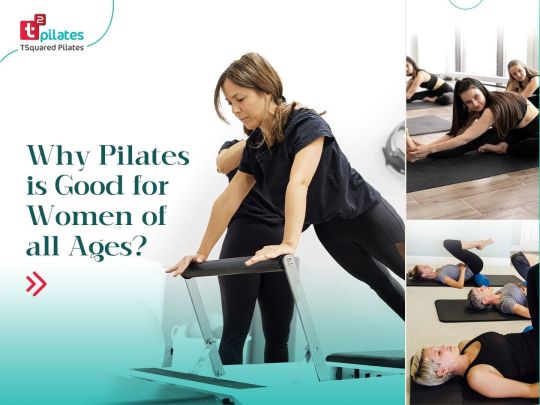
Born in Germany in 1883, Joseph Pilates faced health challenges from a young age, which led him to explore various forms of exercise and physical conditioning.
In the early 20th century, during World War I, Joseph Pilates was interned in a camp along with other German nationals. It was here that he began refining and teaching his system of exercises, which he called "Contrology." His method focused on the integration of mind and body, emphasizing core strength, flexibility, and controlled movements.
After the war, Joseph Pilates moved to the United States and opened a studio in New York City with his wife Clara. Over time, his unique approach to fitness gained popularity, especially among dancers and athletes who appreciated its emphasis on core strength and overall body control.
The Pilates method continued to evolve and gain recognition throughout the 20th century and has since become a mainstream form of exercise. Today, Pilates is practised worldwide, with various adaptations and styles, and is recognized for its holistic approach to physical fitness and well-being.
Now that brings us to a question.
Why is Pilates so important in today’s workout?
Pilates, over the ages, has evolved and worked on. No, it is not another form of yoga. Rather, it has similarities to yoga but it is not of the same house, at all. Pilates, too look after the overall wellness of the body while integrating different workouts in one.
First off, it's like the best of mindful exercise. In a world where we're all about quick fixes and high-intensity craziness, Pilates is that calm, collected friend reminding us to slow down and do things with purpose.
Now, here's the best part—it's not just about getting a six-pack. Pilates is like a full-body symphony. It hones in on your core, yes, but it also gives love to muscles you didn't even know existed. It's not a one-trick pony; it's rather a holistic approach that makes your whole body move in a realigned way.
In our tech-dominated lives where we're all hunched over screens, Pilates is the superhero fixing our posture. It's the reset button for our bodies, undoing the damage from hours of desk slouching.
And let's not forget the mental game. Pilates is also like a mini-vacation for your brain. The focus on controlled movements and that mind-body connection? It's the antidote to the chaos of our daily lives.
Why Pilates is Good For Women?
Here’s one more thing that needs to be addressed. People say that Pilates is only made for women. It is absolutely wrong.
One sort of exercise, when built can cater to different body types. That is true. But what is not true is that Pilates is designed for only women. Different bodies have different structure that works on different effects when working out. Pilates does not have a gender bias when it comes to training bodies. It is an exercise for all though age groups can slightly work around this issue.
But, it can be said that it provides some good benefits to women. And there are scientific reasons why so.
Core strength enhancement
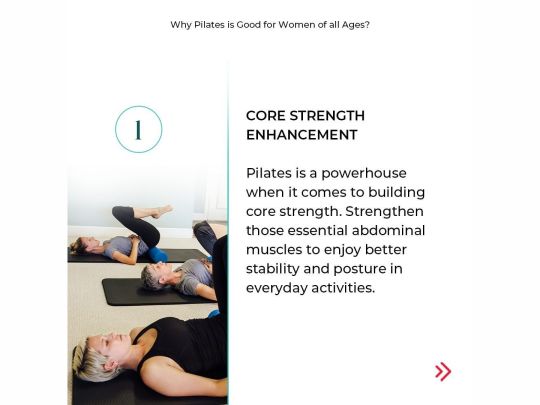
Strong core muscles mean better posture. In a world where we spend way too much time slouched over screens, Pilates is your posture superhero. It's like a gentle reminder to stand tall and own your space.
Once your abdominal muscles are completely engaged in a full-fledged restricted sort of exercise, you tend to gain strength in it. It also targets your pelvic floor to both contract and release which is a sign of ultimate strength.
Empower your pelvic floor
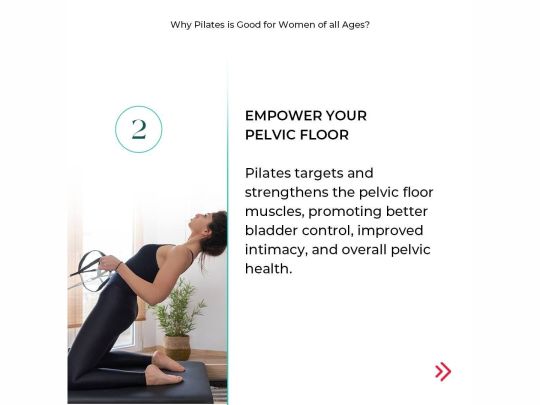
Pilates, with its targeted and controlled movements, becomes the secret sauce for empowering
your pelvic floor. Those deep pelvic muscles get a personalized workout plan, not just a generic routine. Pilates work on them, giving a strength boost that's like a superhero cape for your pelvic floor.
So, why does this matter? Well, a strong pelvic floor isn't just about doing fancy yoga poses; it's a game-changer for women. Pilates helps prevent issues like incontinence and provides support for pelvic organs, especially post-pregnancy. It's like creating a solid foundation that radiates strength from the inside out. Plus, it adds an extra layer of confidence—you're not just doing Pilates; you're owning your pelvic power.
Injury prevention
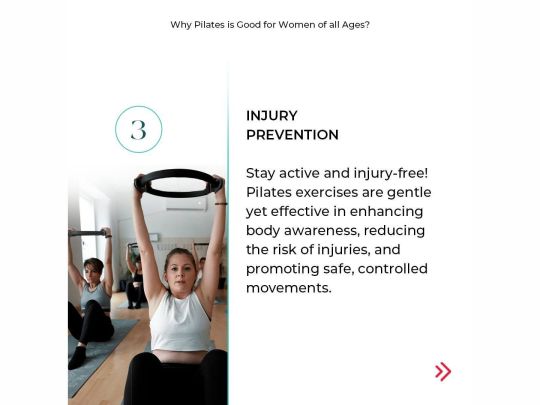
The cornerstone of this injury prevention magic lies in core stability. Pilates meticulously targets deep stabilizing muscles, fortifying the core like a protective shield. By nurturing a strong foundation, it minimizes the risk of injuries to the spine and surrounding muscles, offering a robust defence against strains and sprains.
Balance is the watchword in the Pilates playbook. Pilates isn't into favouritism; it works all the muscles equally. Unlike workouts that might spotlight certain muscle groups at the expense of others, Pilates acts as a maestro of equilibrium. Its exercises are crafted to engage various muscle groups, ensuring a symmetrical and balanced development. This balanced approach plays a pivotal role in injury prevention by averting the pitfalls of overuse injuries often associated with uneven muscle development.
Flexibility, the unsung hero of injury prevention, takes centre stage in Pilates. The controlled stretches and movements not only enhance flexibility but also act as a safeguard against muscle tightness—the silent instigator of injuries. Plus, it's like a personal trainer for your joints, keeping them happy and healthy.
Flexibility revival
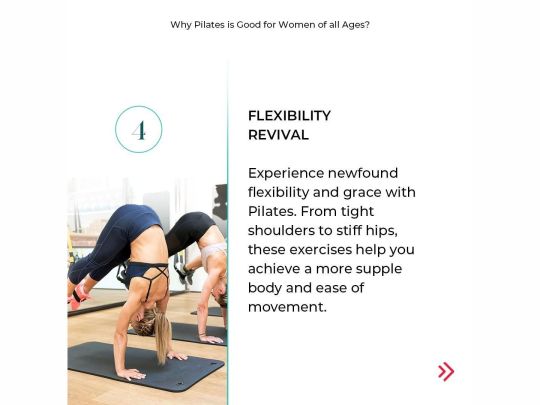
As said before, pilates isn't into favouritism. With an overall improvement, pilates tends to make your body much more flexible than before.
And yes, you are right here. This busts a myth in the correct way. For pilates, you don't need to be flexible. Rather, pilates make you flexible. Being consistent in restraining your movement in one particular way, brings out the flexibility of that region.
So, if you've been dreaming of doing the splits or simply want to move without feeling like a rusty robot, Pilates is your flexibility fairy godmother. It's not just about bending your body; it's about embracing a body that moves with grace and ease.
Stress Reduction
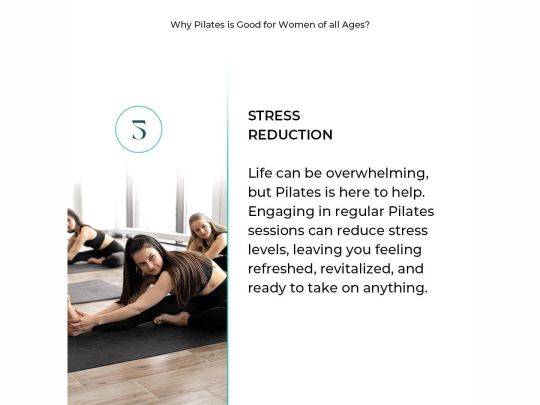
Pilates is like the zen master of workouts, and stress doesn't stand a chance. The secret sauce? Mindfulness. It's not just about going through the motions; it's about being present in every stretch and twist.
And let's not forget the breathwork. Pilates is all about that rhythmic breathing that's like a mini-vacation for your brain. Inhale the calm, exhale the chaos. It's like a reset button for your nervous system, helping you leave the stress at the door.
The controlled, deliberate movements in Pilates are more than just a physical workout; they're a form of moving meditation. Stress is like a cloud that dissipates with each graceful motion. Your mind gets a breather, and your body follows suit.
Summary
In a nutshell, Pilates empowers women's health by sculpting strength, enhancing flexibility, and promoting core stability. It's a holistic approach that not only tones muscles but also improves posture and prevents injuries. With its focus on mindful movements, Pilates becomes a sanctuary for stress reduction, fostering mental well-being. In short, Pilates is the key to unlocking a healthier, stronger, and more balanced version of you.
So, roll out your mats and get to pilates!
1 note
·
View note
Text
A Brief Overview of Pilates,Unveiling the Pilates Principles,Tips for Initiating Your Pilates Journey
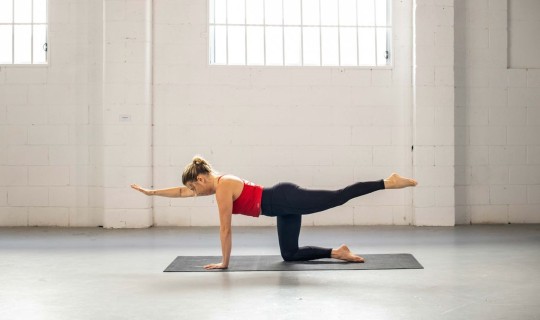
0 notes
Note
https://www.tumblr.com/amoreuxi/787046540174868480/httpswwwtumblrcomamoreuxi787009299998261248
Omg yes..
I may just start calling it that now
will that make us contrologists? contrologers? controloters? how does english work?
ps: I can't really open the link when you send it on an ask haha
0 notes
Text
A Brief Overview of Pilates,Unveiling the Pilates Principles,Tips for Initiating Your Pilates Journey
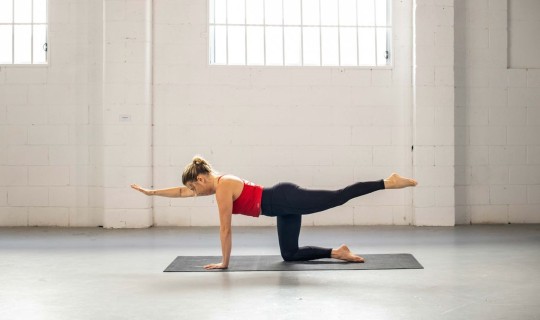
0 notes
Text
Beyond the Core: The Hidden Strengths of Pilates You’re Probably Missing
When you hear the word “Pilates,” what comes to mind? For most, it’s a flat stomach, a flexible spine, and a low-impact workout favoured by dancers. And while those things are true, they are only a fraction of the story. To see Pilates as just a “core workout” is like seeing an iceberg and ignoring the massive, powerful foundation hidden beneath the surface.
The true genius of Pilates, originally named “Contrology” by its founder Joseph Pilates, lies not just in what you do, but how you do it. It’s a sophisticated method designed to retrain your body’s fundamental movement patterns. Let’s explore some of the most important, yet lesser-known, aspects of this incredible practice.
1. The Secret to “Long, Lean Muscles”: Eccentric Contraction
Have you ever wondered how Pilates creates strong, toned muscles without the bulk associated with traditional weightlifting? The secret is a principle called eccentric muscle contraction.
Most workouts focus on concentric contraction — shortening a muscle to move a load (like curling a dumbbell). Eccentric contraction is the opposite: it’s the action of a muscle lengthening while under tension. Think about the control required to slowly lower that same dumbbell back down.
Pilates is built around this principle. The springs on a reformer, for example, provide continuous tension, forcing your muscles to work just as hard during the “return” phase of an exercise as they do on the way out. This controlled lengthening under load builds incredible strength and resilience from deep within the muscle fiber, leading to that signature toned, elongated appearance without stressing the joints.
2. Developing Your “Sixth Sense”: Proprioception
One of the most profound and under-appreciated benefits of Pilates is the enhancement of your proprioception. This is your body’s “sixth sense” — its innate ability to understand where it is in space without you having to look. It’s the reason you can walk up a flight of stairs in the dark or touch your finger to your nose with your eyes closed.
In our modern, sedentary lives, this sense can become dull. Pilates reawakens it. The slow, precise, and highly focused movements demand that you pay attention to your alignment and the subtle sensations in your body. This heightened awareness translates directly to the real world, resulting in:
Better Balance & Coordination: Reducing your risk of falls and injuries.
Improved Athletic Performance: A golfer can refine their swing, a tennis player their serve, and a runner their stride.
More Graceful Movement: Everyday actions like lifting groceries or sitting at a desk become more efficient and less taxing.
3. It’s Not About Strength, It’s About Control
Joseph Pilates named his method “Contrology” for a reason. He believed that the ultimate goal was the mind gaining complete control over the body. This is a crucial distinction. It’s not about mindlessly performing 20 reps. It’s about executing one single, perfect repetition where every part of your body is working in harmony.
This is the practice of engaging your deep, stabilizing muscles — the ones you don’t see in the mirror — to support the larger muscles that do the moving. It’s the difference between brute force and intelligent strength. This level of control protects your spine, improves your posture, and creates movement patterns that are both powerful and sustainable for a lifetime.
4. The Correct Way to Breathe Changes Everything
“Inhale to prepare, exhale on the exertion.” You’ve heard it before, but in Pilates, breathing is an active tool, not a passive instruction. The technique, known as lateral or intercostal breathing, involves breathing wide into the sides and back of your ribcage.
Why is this so important?
Deeper Core Engagement: This technique allows you to keep your deepest abdominal muscles (like the transverse abdominis, your body’s natural corset) engaged, even during a full inhale.
Reduced Neck and Shoulder Tension: It prevents you from using the accessory breathing muscles in your neck and shoulders, which is a common cause of tension and pain.
Calms the Nervous System: Focused, deep breathing stimulates the vagus nerve, shifting your body out of a “fight-or-flight” state and into a “rest-and-digest” mode. This makes Pilates both a physical workout and a mental reset.
So, the next time you approach a Pilates session, either on the mat or a reformer, we invite you to look deeper. Feel the control in the eccentric phase, tune into your body’s position in space, and let your breath guide every movement. You’ll discover that you’re not just building a stronger core; you’re building a smarter, more resilient, and more intuitive body.
0 notes